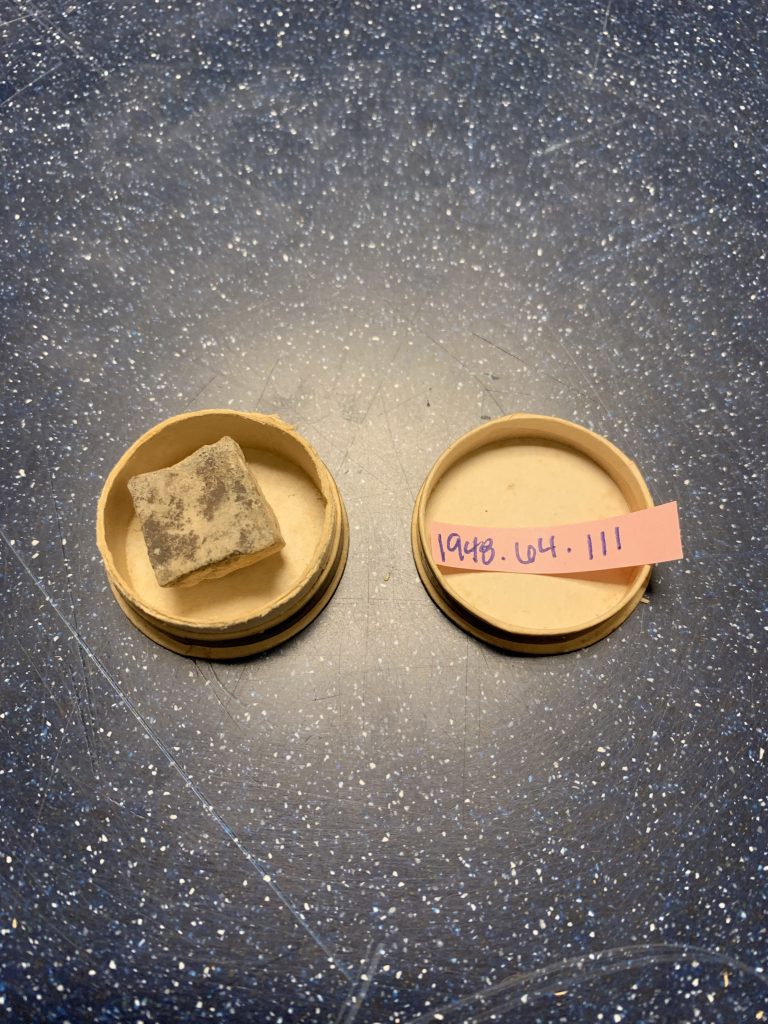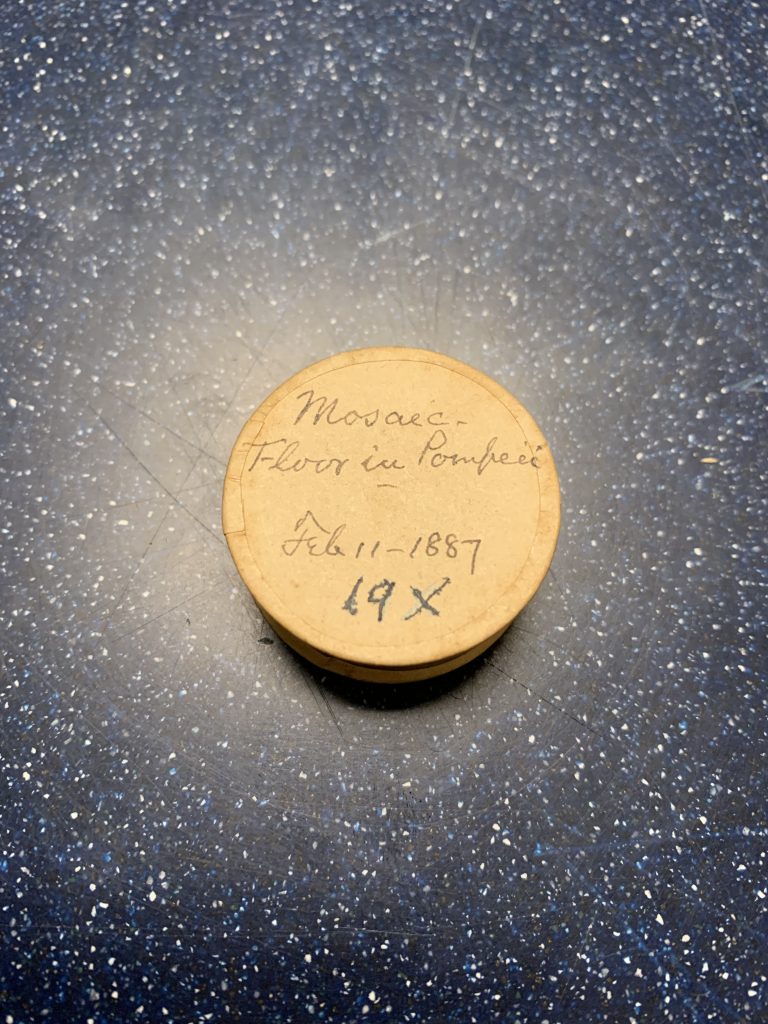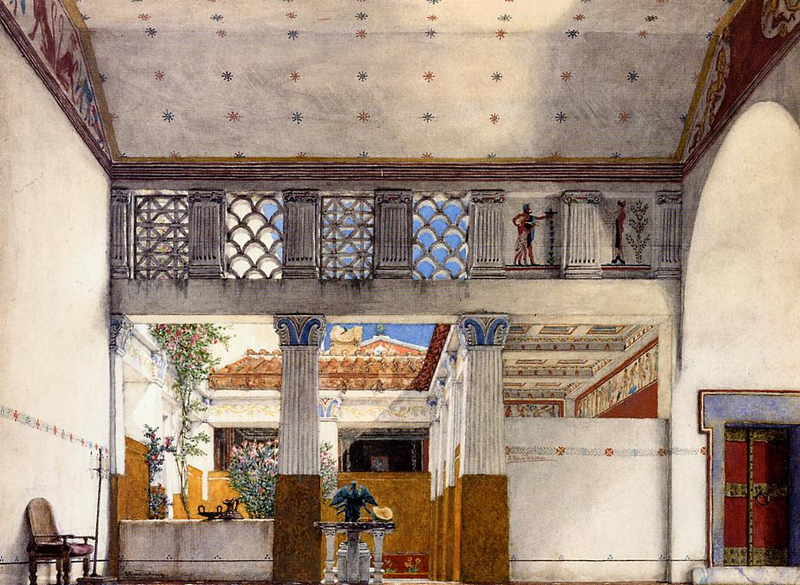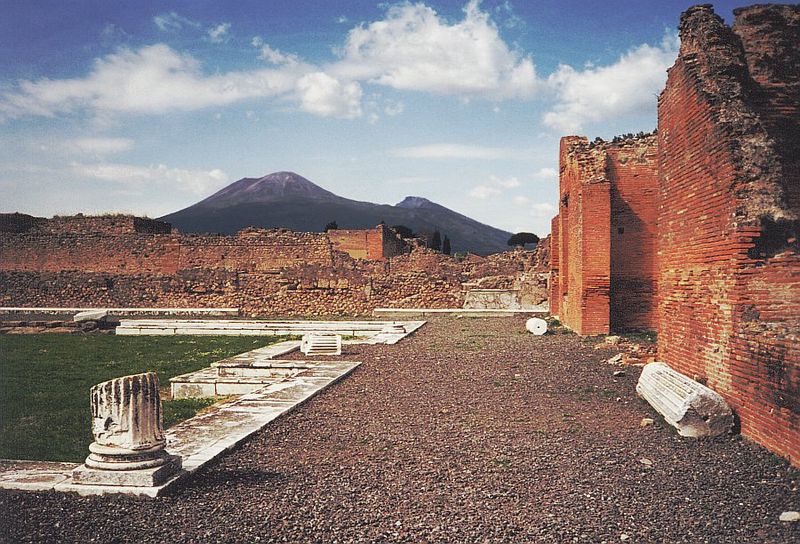
Mosaic Tessera from Pompeii 
Canister with Reeve’s Handwritten Label
- BM #: 1948-64-111
- Place Acquired: Pompeii, Italy (40°45’3.60″ N 14°29’13.20″ E)
- Date Acquired: February 11th, 1887
- Material: Stone (granite, glass, various stone)
Pompeii was an ancient Roman city located on the Southwest coast of the Italian peninsula. Grand Rome houses or Roman “domus” were found throughout Pompeii. While many of the architectural elements of these houses were similar they contained different decorative elements. One of these elements was the use of mosaic or small pieces of stone place together to create an image or pattern flooring.
General Reeve visited Pompeii in the 1880s. Pompeii had been an international tourist attraction for Europeans over a century before Reeve went. However, during the time Reeve visited there were archaeological excavations under Michele Ruggiero occurring to preserve and restore original Pompeii (Chicago Science Center 2020). The newness of these excavations led to intrigue among European and American travelers resulting in large numbers of tourists visiting Pompeii.
Pompeii became a Roman colony in 80 BC. During its time as a colony it was known to be a hub for trade throughout the Mediterranean Sea. Due to its nature as a trade center, Pompeii contained the homes of many wealthy citizens. These wealthy citizens built homes all over Pompeii and used mosaic floors as a means of decoration and sign of luxury. Ultimately, Mount Vesuvius erupted in 79 AD covering the city of Pompeii in a layer of ash and preserving the people that lived there and the buildings in existence.
As a Roman colony in 80 BC Pompeii began to integrate Roman political, social and architectural customs. On of the architectural elements Pompeii adopted was the use of mosaic flooring in both private homes and public spaces. Many of the floors in Pompeii and the Roman Empire in general were had made by arranging small pieces of stone and glass into certain patterns or images. These mosaics brought vibrancy and uniqueness to wealthy Roman citizen’s homes
Mosaic floors were an integral part of Roman homes and decoration of both public and private spaces. By using different colored and sized stones and glass, mosaics brought imagery, pattern and color to the Roman “domus.” In Reeve’s canister there is one square piece of mosaic stone flooring (tessera) that was cut out from a house in Pompeii during an archaeological excavation occurring during Reeve’s visit.



For Further Reading:
- Curtis, Robert I. 1984. “A Personalized Floor Mosaic from Pompeii.” American Journal of Archaeology 88, no. 4 (1984): 557-66.
- Joyce, Hetty. 1979. “Form, Function and Technique in the Pavements of Delos and Pompeii.” American Journal of Archaeology 83, no. 3 (1979): 253-63.
- Jashemski, Wilhelmina F. 2002. The Natural History of Pompeii. Cambridge University Press. 6-28.
- Masters, S. 2009. Light, space and affluent taste: Ancient Pompeian houses and their decoration. Akroterion, 141.
- Clarke, J.R. 1991. The Houses of Roman Italy, 100 B.C. – A.D. 250: Ritual, Space, and Decoration. Berkeley: University of California Press.
- Vitruvius, De Architectura: Book VII 1.3.